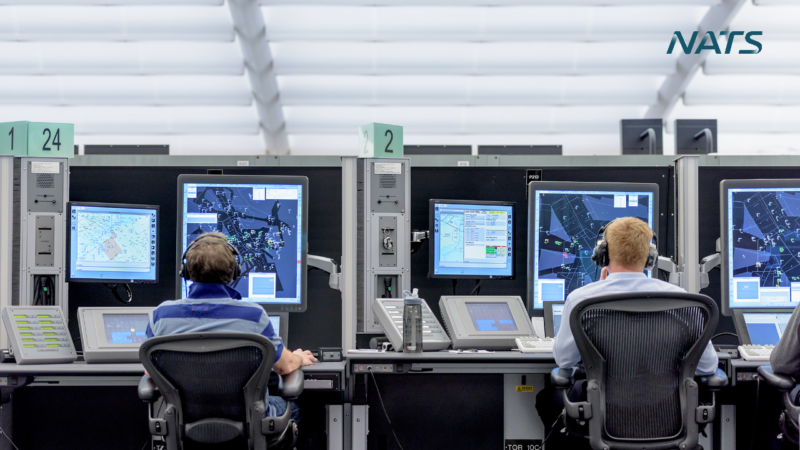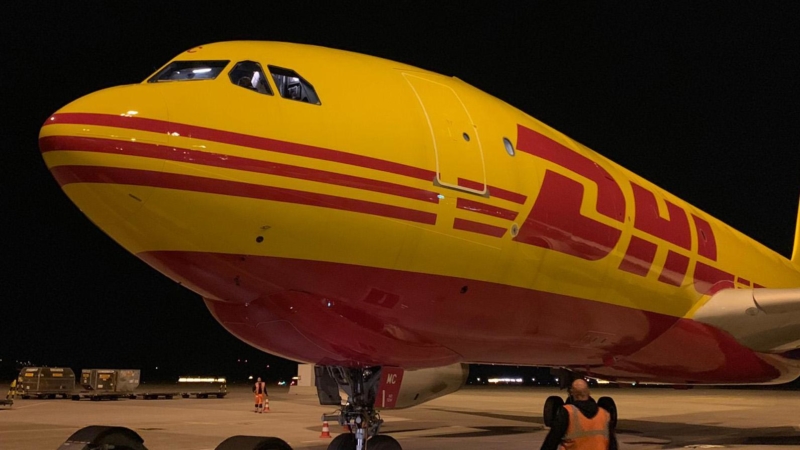As part of our commitment to improving the environmental efficiency of our operation, we routinely monitor airborne holding at airports across the UK. Holding, especially at the London airports, has a significant contribution to high 3Di scores, generating excess fuel burn and emissions.
As Ian explained in his blog post, we use our 3Di tool – which we’ve now made freely available to the rest of the industry – to measure how close each flight in our airspace comes to achieving the ‘perfect’ trajectory. A flight that gets a smooth climb and descent and a direct route at the most efficient flight level would get a score of zero. Anything that causes it to deviate from that sees the score go up.
Pre-covid, the average 3Di score for the whole of UK airspace was around 28. Inner airborne holding for Heathrow typically accounted for between 2-4 points of the total score, with further knock-on impacts to departures and the overall efficiency of London’s airspace. In 2019 over 41,000 tonnes of fuel were burned in the inner holds, equating to 130,000 tonnes of CO2, equivalent to 750 B777s flying to New York.
As we all know, the pandemic has dramatically reduced air traffic across the UK and indeed the globe. With reduced traffic, it would seem logical to expect a reduced amount of airborne holding close to the UK’s airports. However, whilst the amount of holding has reduced, several airlines have still experienced airborne holding. In our efforts to build back better, we wanted to make sure we understood the reasons behind this and see if there was anything we could do to reduce it.
Surprisingly, we found that one of the prime causes has actually been the lack of traffic, which has led to flights running early compared to their schedule. So, a flight might depart a few minutes early from stand, be given a short taxi to the runway, immediate take-off and then be offered direct routeing which will take a few more minutes off its flying time. The cumulative effect of this will be an early arrival at the flight’s final destination.
For many flights, this may not present an issue but, for one particular regular flight into Heathrow, it has. I noticed back in September that this flight regularly arrived before the 0600 morning curfew, ending up in the holding stack 16 days that month. Analytics estimated that total holding fuel for this flight during September exceeded 10 metric tonnes. The aircraft was held for a total of 168 minutes; in simple terms, you could have flown from London to Venice with the fuel it used in holding!
So, we contacted the airline to discuss the situation. They were astonished to hear about their holding at Heathrow and took swift and immediate action to put in place new procedures to prevent the flight arriving early and having to hold.
We were really impressed with how quickly the airline responded to our request, and how quickly they acted to resolve the issue. The change to their operating procedures was put in place overnight, and their holding performance for the Heathrow early arrival flight has improved significantly. The number of instances of flights holding has also gone down. In January, the early arrival into Heathrow only had to hold on three occasions and then only for a few minutes.
Below on the left, shows a flight into Heathrow on Sunday 4 October which arrived really early and held for 39 minutes in the Lambourne stack before landing at 0603 local. The right shows the very next day, when the same flight held back its departure and arrived at Lambourne at 0608 local and made a straight in approach with no holding. We have continued to monitor this particular flight and there has been a real long-term gain in performance.

This is just one example of how we’re able to use 3Di to make real world improvements to our customers’ operations, while making a contribution to making aviation more environmentally sustainable.
As an industry, aviation is under great pressure to ‘build back better’ as part of our drive towards net zero carbon operations by 2050. This is the perfect time to engage with our airport and airline customers on how we continue to embed the flight efficiency savings we have seen over the past year with lower traffic, as well as how to reshape and modernise our airspace to make it fundamentally more environmentally sustainable for the long-term.
NATS has made its 3Di airspace efficiency tool available free to anyone in the aviation community that would like to use it. Find out more: nats.aero/environment/airspace-efficiency
Comments
Please respect our commenting policy and guidelines when posting on this website.




29.04.2021
11:30
Alan Burrill
while impressive at how the airborne delays have been tackled how about the engines turning and burning at the hold for the runways while they wait for take-off clearance?
05.05.2021
15:31
Chris Smith
Although NATS gets penalised from a 3Di perspective from stack holding, in pre Covid days some holding was useful as a means to maximise runway utilisation, which I imagine airlines were keen on NATS to do, so it can probably never be eliminated.
30.05.2021
13:34
Clive
Some aircraft can utilise single engine taxi to the Runway Hold Point and the departure sequence can be tailored to reduce the number of aircraft at the hold, particularly in ACDM airports.